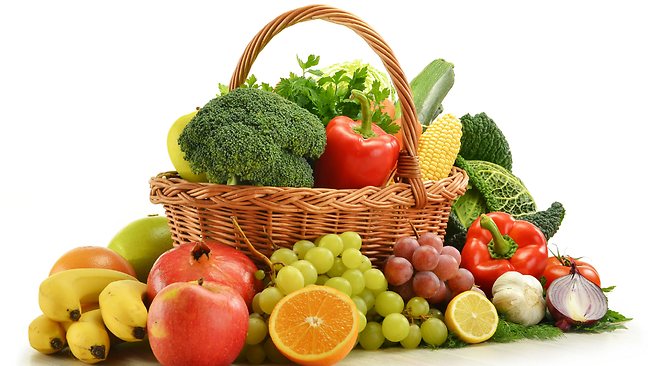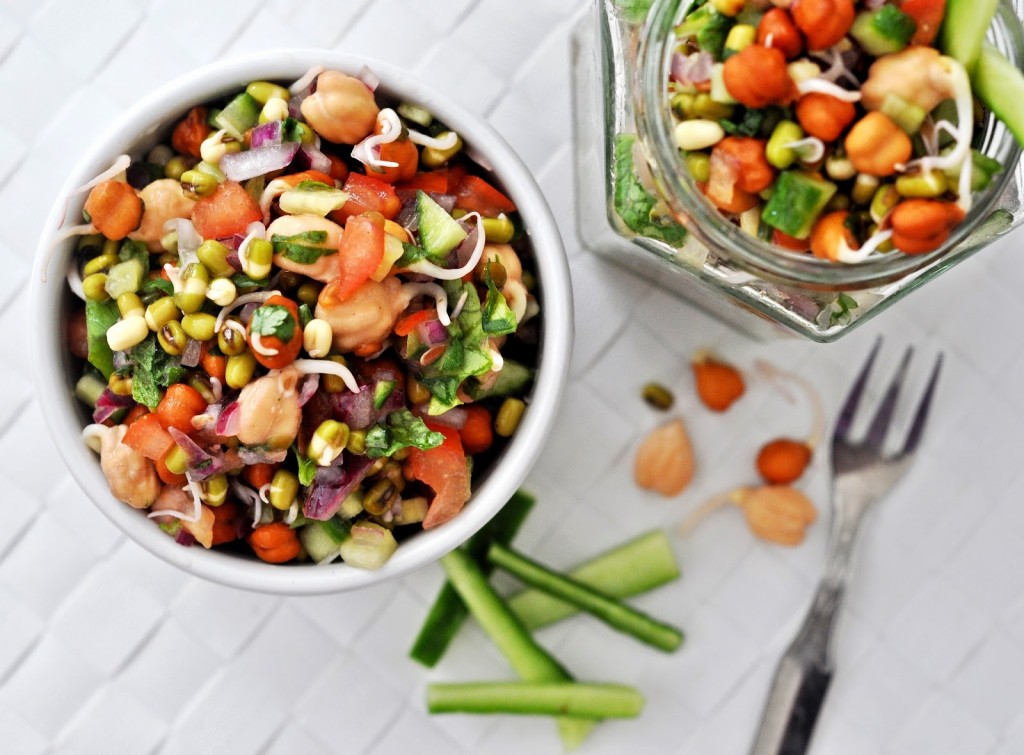What is anemia?
Anemia is a condition in which your body does not have enough healthy red blood cells to carry adequate oxygen to your body’s tissues. Having anemia, also referred to as low hemoglobin, can make you feel tired and weak and is often associated with pale skin and nails, and hair fall.
Anemia widely affects people of all age groups and genders. In India, the prevalence of anemia is as high as 38% in women, 22% in men and 40% in pregnant women.
Anemia is diagnosed by a blood test called complete blood count that looks at the hemoglobin level along with cell counts in the blood. The normal value of hemoglobin for women is 12-15.5 g/dl and for men it is 13-17.5 g/dl. Anything below this hemoglobin level is considered to be anemia.
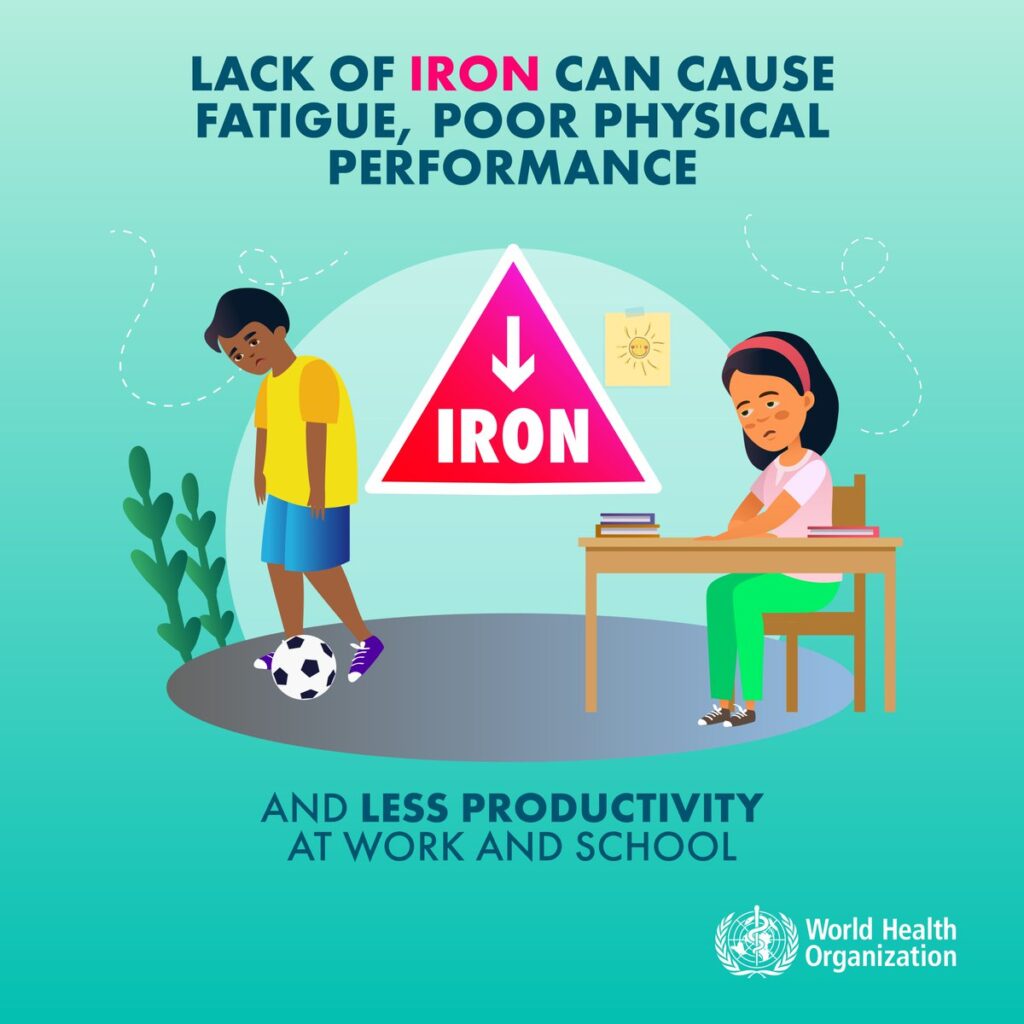
What are the types of anemia?
Nutritional anemia is the commonest type of anemia and is divided into iron deficiency anemia, vitamin B12 deficiency anemia and folic acid deficiency anemia. The lack of the desired amount of vitamins and minerals, also known as micronutrients, in our diet is the main reason why nutritional anemia develops.
The other less common types of anemia may be due to genetic factors, abnormal red blood cells, chronic illnesses and disease of the bone marrow.
Who is at risk of developing anemia?
The following groups of people are at a high risk of developing anemia:
1. Lack of a balanced healthy diet leads to nutritional anemia. People may not be consuming a healthy diet due to lack of knowledge about healthy food choices, lack of financial means to procure healthy food, or due to poorly informed dietary practices such as avoidance diets, crash diets etc.
2. Chronic blood loss such as women in the reproductive age group with heavy menstrual bleeding, individuals with undiagnosed occult blood loss from the gut, and medication-induced bleeding in those who take pain medication for prolonged periods of time.
3. Acute blood loss such as during surgical procedures and road traffic accidents.
4. Elderly individuals are at a higher risk of developing anemia due to a combination of factors such as poor appetite, dentition related issues, reduced absorption of nutrients from the gut, associated co-morbidities and lack of access to fresh and nutritionally wholesome foods.
5. Pregnant women are susceptible to anemia because of the increased demand posed by the developing fetus.
6. Adolescent girls are prone to anemia due to the alterations in their body physiology and the hormonal changes associated with menstruation.
7. Individuals with any chronic conditions such as chronic kidney disease, liver disease, heart failure and malabsorption syndromes are at high risk for developing anemia.
Why should heart patients be extra vigilant about anemia?
From the above discussion, it is clear that anemia may occur in heart patients who have undergone cardiac surgeries such as bypass surgery or valve surgery, in individuals with heart failure and in almost any cardiac patient with poor nutritional habits. As the heart is the pumping organ responsible for circulating blood to all parts of the body, whenever there is anemia your heart has to work much harder than normal to ensure that the rest of the body gets sufficient oxygen and energy. This means that the wear and tear on the heart muscle is higher when you are anemic and therefore the possibility of the heart becoming weak or failing is also much higher than in normal individuals. In fact, anemia, heart failure and renal failure are a deadly combination as they form a vicious cycle where one worsens the other and leads to rapid deterioration of overall health. Hence, it is very important to diagnose anemia in a timely manner and to treat it at the earliest to avoid further complications.
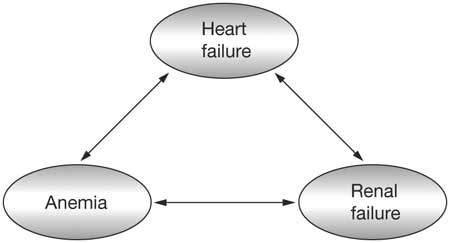
What should you do if you have symptoms of anemia or are at risk?
If you are experiencing symptoms such as undue tiredness or fatigue, breathlessness while doing routine activities, or have had a history of surgery or excessive and prolonged bleeding, visiting your physician should be the first step. After running a battery of tests, your doctor will be able to come to a conclusion about what type of anemia you have and advise you on the appropriate interventions to overcome the problem. While dietary modifications and supplemental iron pills are the most commonly employed solutions, intravenous iron infusion and blood transfusion may be necessary in severe deficiency.
What are the nutritional strategies to overcome anemia?

As a cardiopulmonary dietician, I often guide individuals with anemia on how to improve their hemoglobin level through dietary modifications. Let me walk you through some tips about consuming a diet rich in iron and ensuring that the dietary iron is efficiently absorbed into your bloodstream
There are two types of iron in your food: heme iron that is present in animal sources and non-heme iron that is present in plant sources.
Animal sources of iron – lean meat, chicken breast, meat liver, sardine, oyster, crab, tuna, mackerel, salmon
Plant sources of iron
Nuts and seeds – Nuts, seeds and dried fruits such as figs, dates, pistachios, hemp seeds, pumpkin seeds
Green leafy vegetables – Dark green leaves such as drumstick leaves, spinach, kale
Beans – Chickpeas, kidney beans, soy beans, black beans
Whole grains and millets – such as oats, whole wheat, ragi
Fortified foods – There are a variety of foods that are fortified with iron such as fortified pasta, fortified white rice, fortified orange juice, fortified cereals etc.
Vitamin C helps the absorption of iron in the body and is also essential for cell growth, development and repair of all body tissues, proper functioning of the immune system, and wound healing. Dietary sources of Vitamin C are gooseberry, orange, lemon, guava, strawberries, papaya, capsicum and broccoli.
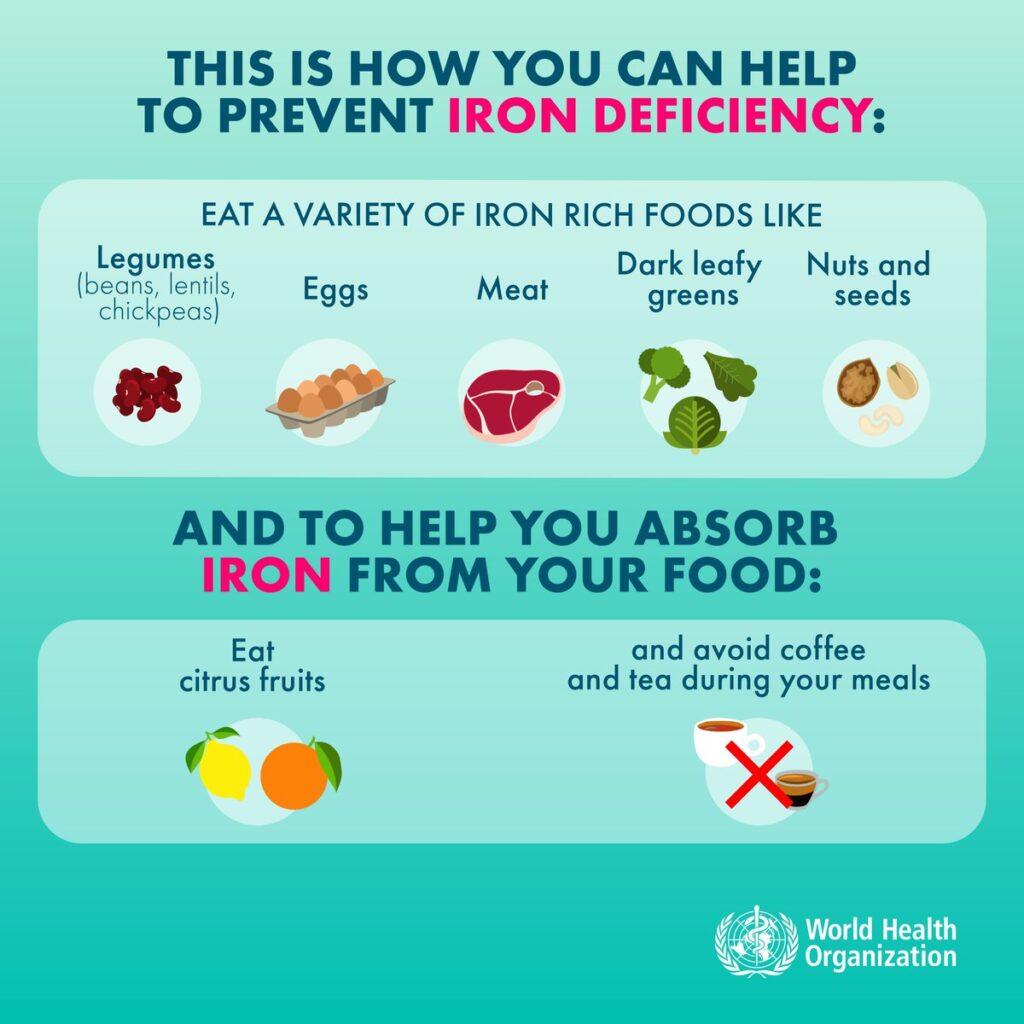
Vitamin B12 and folic acid are also important in order for our body to produce healthy red blood cells. Sources of Vitamin B12 for vegetarians are bananas, melons, sprouts, soy milk and tofu.
Folic acid is present in green leafy vegetables, dried beans and peas, nuts, enriched bread, cereals and other grains.
Poultry, fish, dairy products and eggs also contain both these micronutrients.
In summary, anemia is a common medical condition that should be diagnosed and managed early. Regular routine health checks are very useful in picking up the condition in otherwise well individuals. Eating a balanced diet with a focus on locally available iron-rich foods along with vitamin C, vitamin B12 and folic acid containing foods is the ideal way to prevent and manage nutritional anemias.
